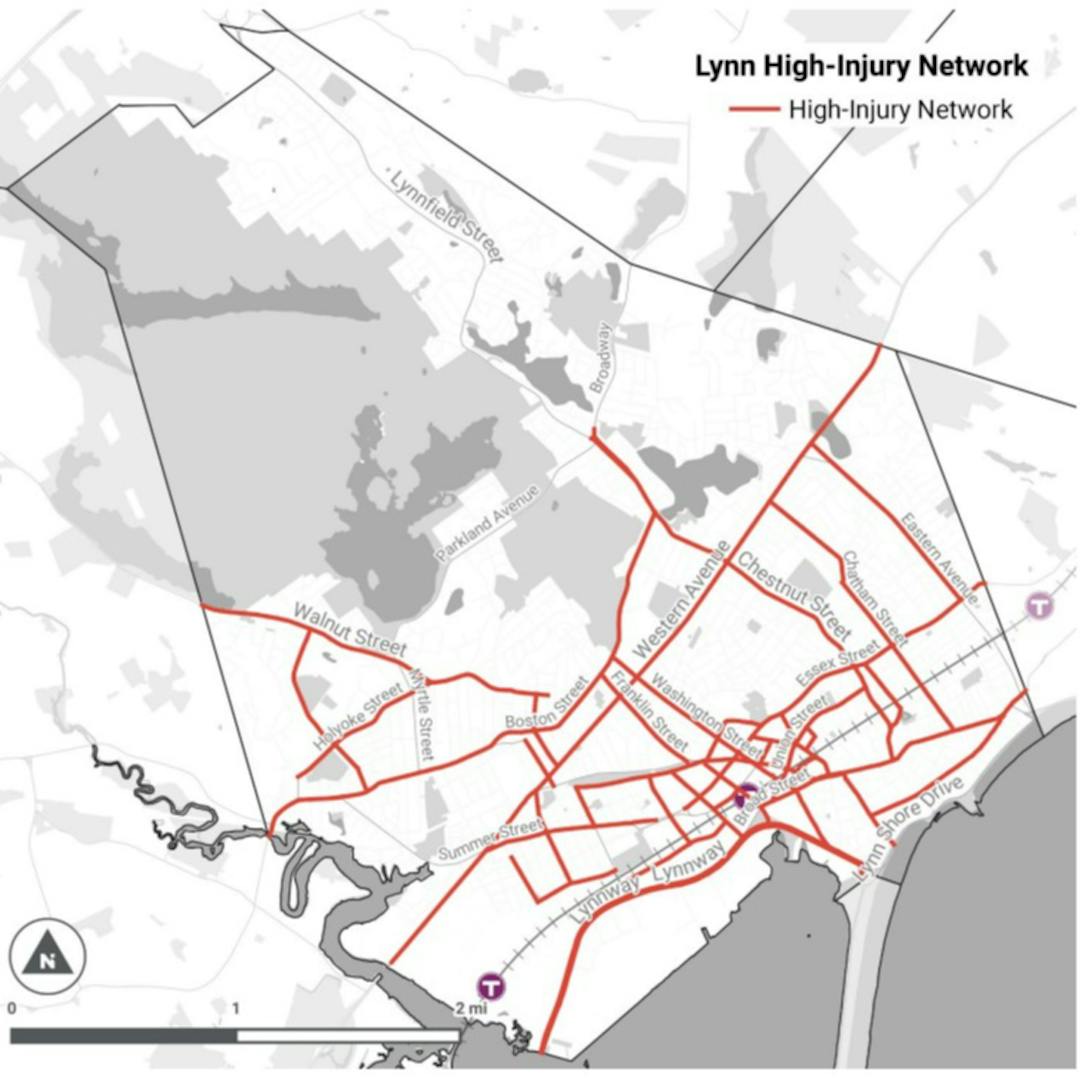Lynn Safety Action Plan

Lynn is Committing to Reducing Deaths and Serious Injuries on Our Streets
Between 2018 and 2022, 14 people lost their lives in crashes in Lynn. Over 2800 more were injured. This is unacceptable, and Lynn is taking action to reduce deaths and serious injuries on our streets. The City is partnering with MassDOT to carry out a planning process to create a Safety Action Plan that is guided by the Vision Zero approach, which is a strategy that seeks to end traffic fatalities and serious injuries. Putting Vision Zero into practice will require the Lynn community to be proactive andContinue reading
Lynn is Committing to Reducing Deaths and Serious Injuries on Our Streets
Between 2018 and 2022, 14 people lost their lives in crashes in Lynn. Over 2800 more were injured. This is unacceptable, and Lynn is taking action to reduce deaths and serious injuries on our streets. The City is partnering with MassDOT to carry out a planning process to create a Safety Action Plan that is guided by the Vision Zero approach, which is a strategy that seeks to end traffic fatalities and serious injuries. Putting Vision Zero into practice will require the Lynn community to be proactive and rethink traffic safety issues. The City’s approach to reducing deaths and serious injuries on our streets will be guided by the following principles:
- Deaths and serious injuries caused by traffic crashes are preventable. Crashes are not “accidents.” Severe crashes can be anticipated and prevented with coordinated planning and action. We can end fatalities and severe injuries on our streets.
- Human life and health should be the top priority in all aspects of how our transportation systems work. Our bodies are vulnerable. Keeping people safe from injury should be the priority.
- Human error is inevitable, and our street network should be forgiving. Vision Zero focuses on making sure that mistakes on our streets are not deadly.
- Traffic safety efforts should focus on system-level changes to influence all individuals’ behavior. Street design affects the behavior of everyone on the road. Changes to street design can guide people to behave more safely.
- Slower speeds save lives. Speed is a key factor in crash severity. Managing traffic speeds throughout the transportation network is critical to reducing deaths and serious injuries.
Serious Crashes in Lynn Today
This map shows where severe crashes occurred in Lynn between 2018 and 2022. It also highlights places where clusters of crashes rank among the highest in the state.
- Severe crashes in Lynn today are concentrated in and around Downtown. However, this is most likely because Downtown sees the most activity by people driving, walking, and biking. Crashes causing serious injuries and fatalities occur all over the city.
- Lynn sees especially high rates of pedestrian and bicyclist crashes. This is important because, from 2018 to 2022, pedestrians and bicyclists involved in crashes were over 3 times more likely to be injured or killed than drivers in the event of a crash. One in five households in Lynn does not have access to a vehicle and relies on walking, biking, and transit to get around.
- Lynn’s traffic safety challenges are some of the most serious in Massachusetts. The city’s street network includes a number of clusters of pedestrian, bike, and vehicle crashes ranking among the most serious statewide.
Where We Go From Here
Starting in fall 2023, the City will be working with MassDOT to create a Safety Action Plan. This will serve as the City’s roadmap to reducing serious injuries and fatalities on Lynn’s streets. The Lynn Safety Action Plan will:
- Identify Lynn’s “High-Injury Network.” This represents the network of streets where the most severe crashes happen today. Action to improve safety on these streets has the potential to prevent the greatest number of injuries and fatalities.
- Recommend street design changes throughout the High-Injury Network. The recommended changes will target the root causes of severe crashes. These might include investments that improve pedestrian crossings, slow down cars, create better sightlines at intersections, and more.
- Provide the City with other approaches to addressing traffic safety problems. Changes to physical street infrastructure can be complemented by program and policy-based action. This could include educational campaigns, public safety interventions, targeted roadway maintenance practices, and more.
Upon completion of the Plan, the City will be eligible to apply for grants from the federal government through the Safe Streets and Roads for All program to support implementation.
-
Lynn Awarded Federal Safety Grant
Share Lynn Awarded Federal Safety Grant on Facebook Share Lynn Awarded Federal Safety Grant on Twitter Share Lynn Awarded Federal Safety Grant on Linkedin Email Lynn Awarded Federal Safety Grant linkSeptember 9, 2024 - The City of Lynn has been awarded a $9.6 million federal grant to implement roadway safety improvements at some of the most dangerous roadways and intersections throughout the City. The funding is awarded through the Safe Streets for All (SS4A) program created through the Bipartisan Infrastructure Law.
Funding will be used to implement recommendations from the Lynn Safety Action Plan recently adopted by the City Council, and will seek to calm traffic, enhance pedestrian crossings, reduce conflicts at roadway intersections, and improve night-time visibility in areas with high levels of pedestrian traffic. Taken together, these improvements will make our roadways safer for all modes of transportation. Funding will also support outreach and engagement activities; stay tuned to the Lynn Safety Action Plan project page to engage and learn how the Safe Streets Grant will be used. In the meantime take a look at the City's SS4A grant application.
Documents & Resources
-
 Lynn Safety Action Plan (13.3 MB) (pdf)
Lynn Safety Action Plan (13.3 MB) (pdf)
-
 Vision Lynn: Citywide Comprehensive Plan (95.4 MB) (pdf)
Vision Lynn: Citywide Comprehensive Plan (95.4 MB) (pdf)
-
 Lynn Safe Streets for People Playbook
Lynn Safe Streets for People Playbook
-
 USDOT Safe Streets and Roads for All Program
USDOT Safe Streets and Roads for All Program
-
 Vision Zero Network: What is Vision Zero?
Vision Zero Network: What is Vision Zero?
-
 Safe Streets for All (SS4A) - Grant Application (2.12 MB) (pdf)
Safe Streets for All (SS4A) - Grant Application (2.12 MB) (pdf)
-
 Lynn Walking and Bicycling Network Plan (2019) (26 MB) (pdf)
Lynn Walking and Bicycling Network Plan (2019) (26 MB) (pdf)
Photos
Signup Banner
Who's Listening
-
Principal Planner

Phone 781-586-6853 Email aclausen@lynnma.gov
